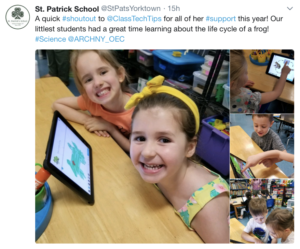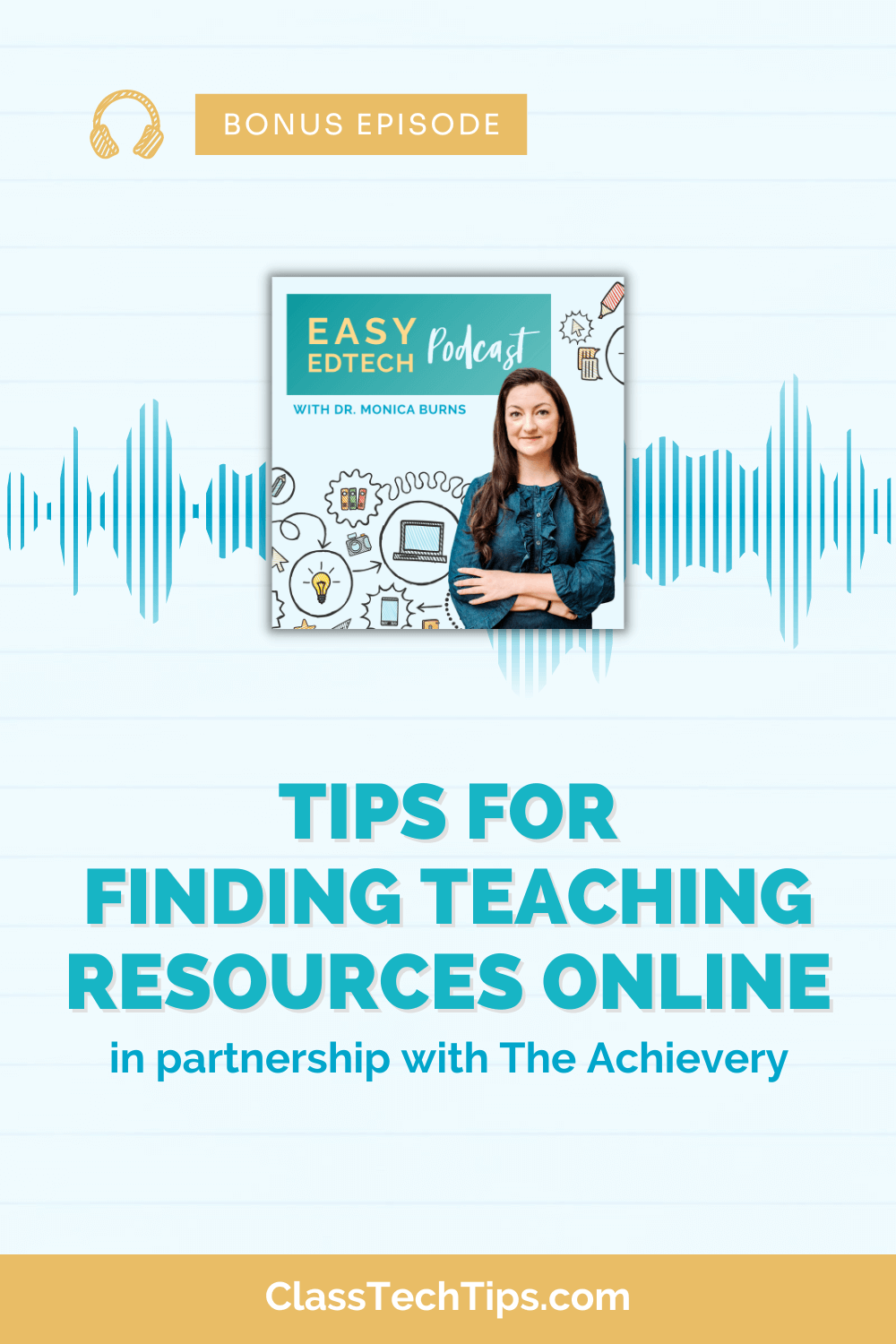Virtual reality in Pre-K isn’t about using headsets with early learners. Instead, we are focused on sharing exciting, informative content connected to instructional goals. This content could include 360 images and 360 videos. Displaying this media can take place on individual student screens (like tablets) or whole class screens (like interactive display boards).
You might have seen my post from earlier this summer on using Nearpod with early learners. Nearpod is a dynamic, interactive presentation tool for students of all ages. One of my favorite features of Nearpod is the ability to embed 360 images to present students with experiences with virtual reality in Pre-K or at any grade level.
Of course, Nearpod isn’t the only tool for accessing virtual reality experiences for early learners. But I’ve had the opportunity to lead lessons using this tool with Pre-K students. Whether sitting in a circle together on the rug or circulating around the classroom, it’s amazing to see how this tool can connect students to engaging and relevant content.
Virtual Reality in Education
Virtual reality in education can be a game changer for students. It can help them explore faraway spaces and spark conversations. For our youngest learners, it can help them envision what life is like in other parts of the world.
In Taming the Wild Text: Literacy Strategies for Today’s Reader , a book I co-authored with Pam Allyn, we describe some of the reasons virtual reality is used in today’s classrooms:
“Virtual reality is technology that simulates the real world. The most popular form of virtual reality uses a headset. With virtual reality, students can be “transported” to new places, like a coral reef or a rainforest… Tailor a virtual reality pre-reading activity to the book you are reading and the technology you have available. In a low-tech classroom, this could mean exploring a 360-degree video with students on an interactive whiteboard. In a high-tech classroom, students can take turns using VR headsets with a smartphone.”
As you design learning activities for Pre-K students, you’ll want to keep a few things in mind. Is the content you are choosing developmentally appropriate? Is the 360 image or 360 video you have decided to share with students connected to learning goals? These are just a few things to consider as you get started.
Virtual Reality Tips for Pre-K
Reflecting on this past school year, and time spent working with early learners, I wanted to take a moment to share virtual reality tips for Pre-K students. These tips include activities and strategies to use before, during, and after virtual reality experiences in your classroom.
Preparing for VR
For many students, a virtual reality experience may be entirely new for them – both inside and outside of the classroom. Although older students might have experience trying on a VR headset, younger students might not understand what is happening on their screen. Prepare early learners for new virtual reality experiences through open conversation and setting a scene.
When introducing virtual reality experiences to a group of students, it’s tempting to want the element of surprise to be center stage. I would encourage you to abandon this idea and prepare students thoughtfully for virtual reality experiences. You might say something like, “Today we are going to watch a movie clip on our big screen where we can look side-by-side and up-and-down like we are really there!”
Practice Movement
If you are introducing students to virtual reality experiences on a tablet, you will want to prepare students by practicing how to move their device. Virtual reality experiences, including the embedded 360 images in Nearpod, are often responsive. As a user moves their device in their hand, they will be able to see a 360 video or 360 images from a new angle.
Have students practice movement before the virtual reality appears on their screen. This practice might include asking students to stay seated at their desks or sitting on a rug. Without a device in their hand, ask students to move their outstretched arms side-to-side to get a feel for their range of motion. With early learners (and even older students) I usually remind them to move their hands like they are driving a car, not driving a rocket ship. This phrase reminds them not to lift their device over their head and keep it at or near eye level.
Download my free ebook with more tips for virtual reality in the classroom.
Set Intentions for Virtual Reality

In addition to clear learning goals, you may want to refer to tthis list of virtual reality discussion prompts. You can tailor the prompts on this list to many different learning environments. They can be used during a virtual reality experience or at the conclusion of a VR exploration.
Do you have a virtual reality experience with early learners to share? What type of content would you like your students to view as a 360 image or 360 video? Share in the comments below!







